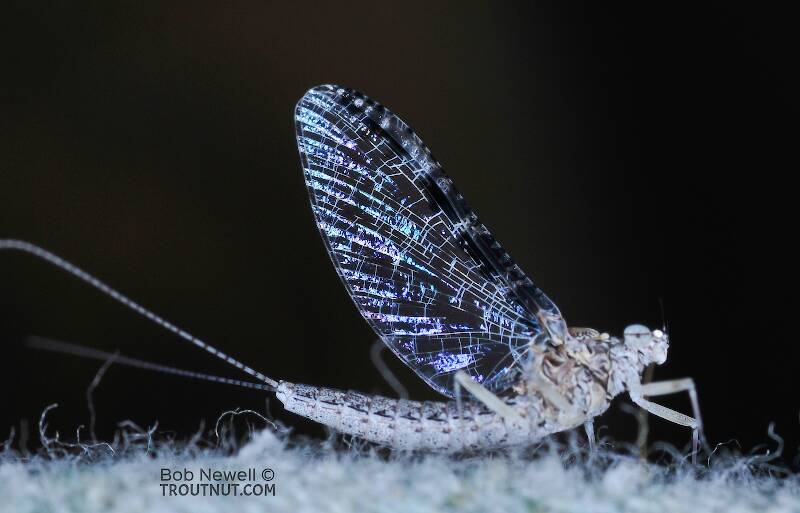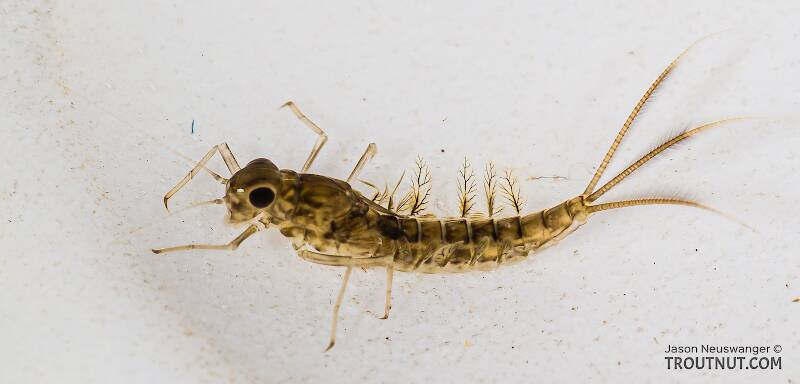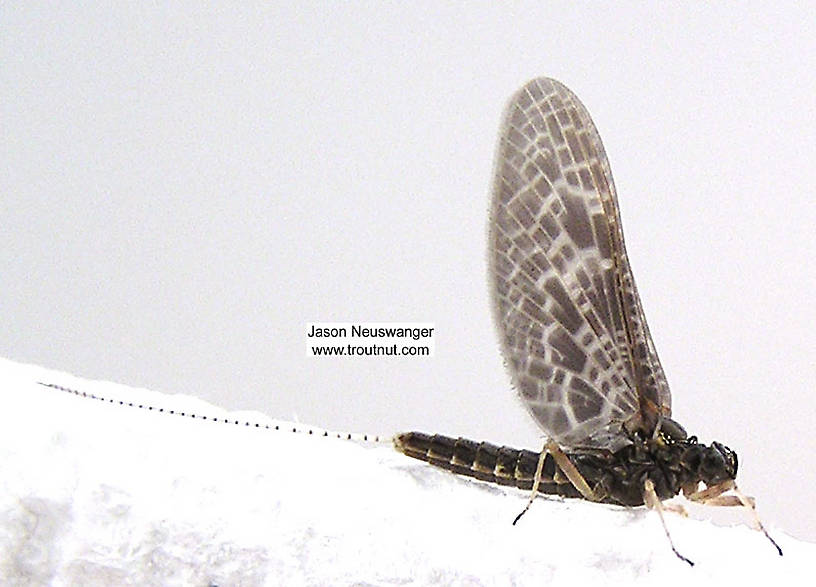
Blue-winged Olives
Baetis
Tiny Baetis mayflies are perhaps the most commonly encountered and imitated by anglers on all American trout streams due to their great abundance, widespread distribution, and trout-friendly emergence habits.
Featured on the forum

I was not fishing, but happened to be at an unrelated social event on a hill above this tiny creek (which I never even saw) when this stonefly flew by me. I assume it came from there. Some key characteristics are tricky to follow, but process of elimination ultimately led me to Sweltsa borealis. It is reassuringly similar to this specimen posted by Bob Newell years ago. It is also so strikingly similar to this nymph from the same river system that I'm comfortable identifying that nymph from this adult. I was especially pleased with the closeup photo of four mites parasitizing this one.

Troutnut is a project started in 2003 by salmonid ecologist Jason "Troutnut" Neuswanger to help anglers and
fly tyers unabashedly embrace the entomological side of the sport. Learn more about Troutnut or
support the project for an enhanced experience here.
Speckled-Winged Spinners
This common name refers to only one genus. Click its scientific name to learn more.
Mayfly Genus Callibaetis
These are very rarely called Speckled-Winged Spinners.
The speckle winged Callibaetis genus contains on average the largest species in the Baetidae family with hatches ranging in size from 20 to 12 (6mm to 12mm). However, most can be matched with 14 and 16 imitations. They reside only in very slow weedy sections of rivers or lakes and ponds.
The most important are the sub-species Callibaetis ferrugineus ferrugineus in the East and Midwest and Callibaetis ferrugineus hageni in the West. It is in the West however, where this genus achieves its densest populations and most significant hatches. Other important western species also happen to be at both sides of the size scale. The outsized Callibaetis californicus can produce excellent hatches. The diminutive Callibaetis pictus can also be locally prolific, especially at higher elevations.
The duns are easily recognized by their speckled bodies and distinctive wings usually featuring a dark background overlaid with white veins. Female spinners are also easy to recognize with their clear wing's leading edges marked with dark blotches -- see the pictures.
The most important are the sub-species Callibaetis ferrugineus ferrugineus in the East and Midwest and Callibaetis ferrugineus hageni in the West. It is in the West however, where this genus achieves its densest populations and most significant hatches. Other important western species also happen to be at both sides of the size scale. The outsized Callibaetis californicus can produce excellent hatches. The diminutive Callibaetis pictus can also be locally prolific, especially at higher elevations.
The duns are easily recognized by their speckled bodies and distinctive wings usually featuring a dark background overlaid with white veins. Female spinners are also easy to recognize with their clear wing's leading edges marked with dark blotches -- see the pictures.

These adults are probably C. ferrugineus.

This nymph was one of a horde I could see cruising the still shallows of a cold tailwater, mixed in with an intense emergence of duns. It's one of four specimens I photographed together from the same hatch, also including a male dun, a female dun, and a male spinner.
This nymph keys to either Callibaetis ferrugineous or Callibaetis pallidus. The lack of a darkened preapical band on the femora would suggest pallidus, but I can't definitively make out the "single seta" on the outer, ventral apex of any of the tarsi, the length of which is supposedly a more reliable characteristic to tell the species spart. I can maybe make something out on one of the legs at the highest magnification, and its dimensions would suggest ferrugineous.
This nymph keys to either Callibaetis ferrugineous or Callibaetis pallidus. The lack of a darkened preapical band on the femora would suggest pallidus, but I can't definitively make out the "single seta" on the outer, ventral apex of any of the tarsi, the length of which is supposedly a more reliable characteristic to tell the species spart. I can maybe make something out on one of the legs at the highest magnification, and its dimensions would suggest ferrugineous.
See 12 more specimens...


